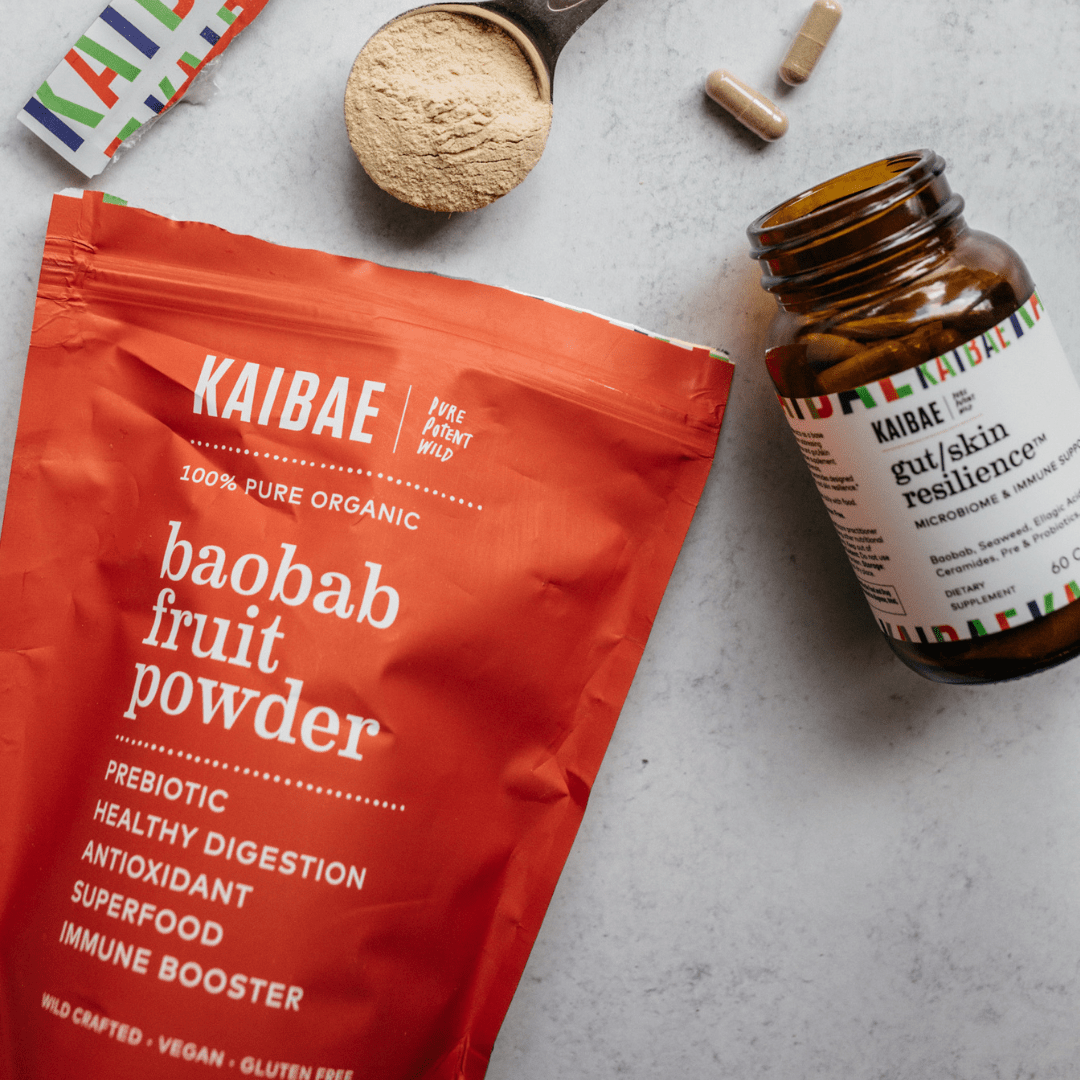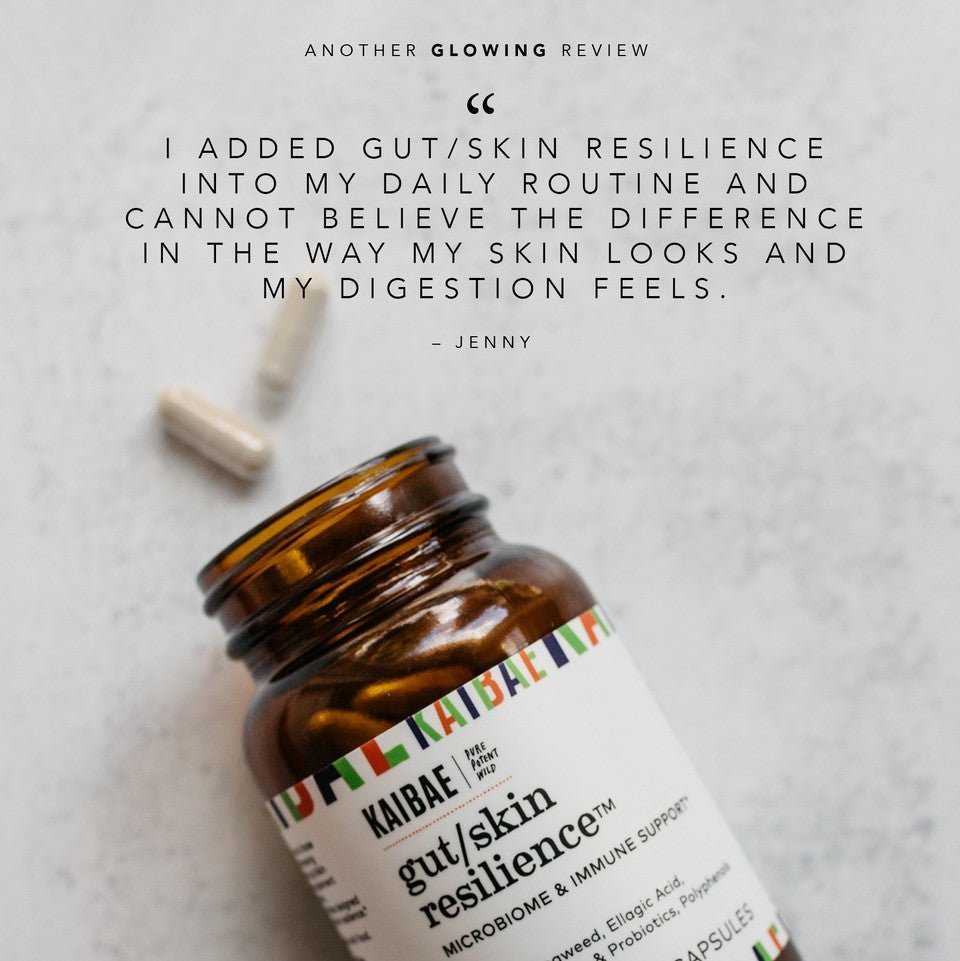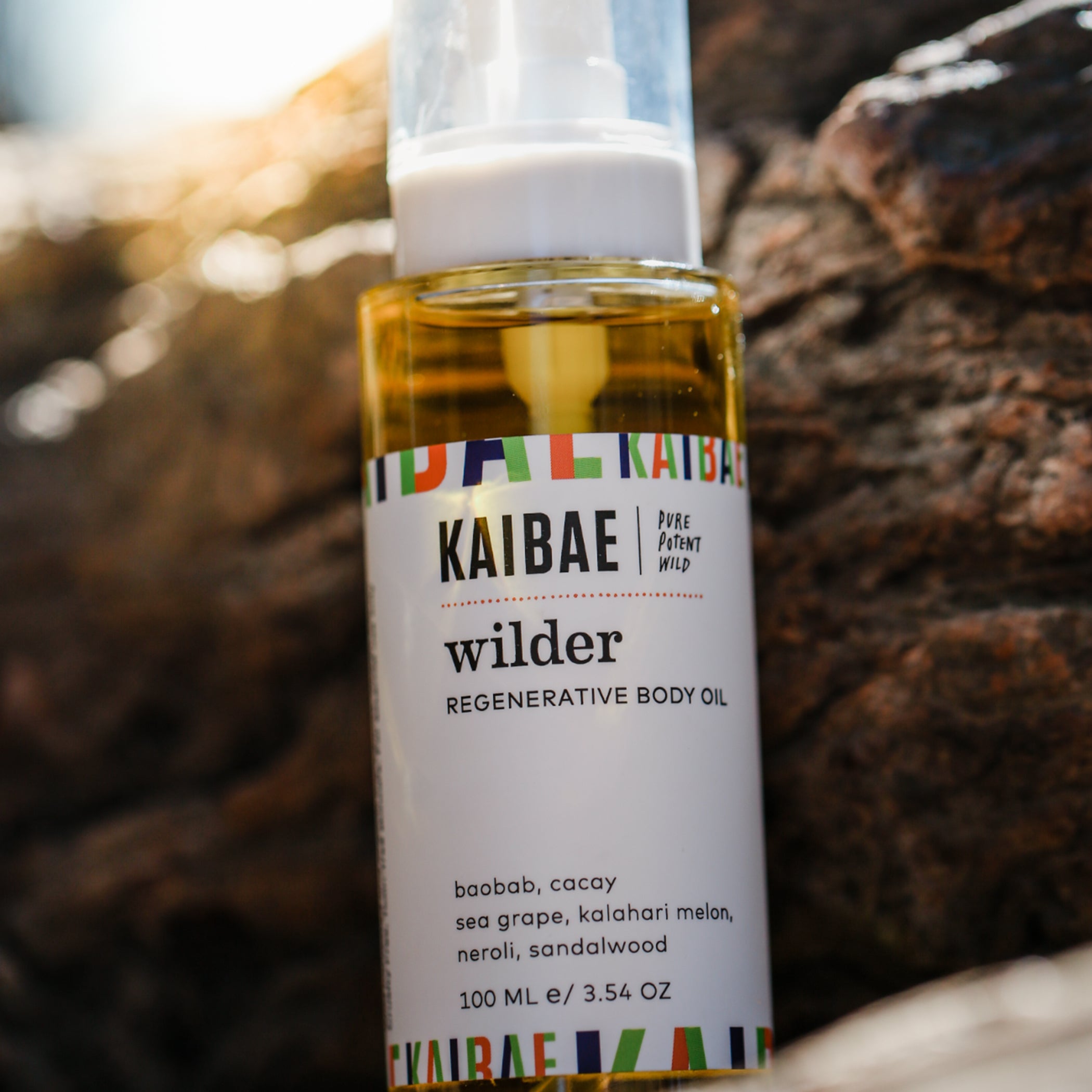Baobab: The Key to Healthy Aging and Glowing Skin

The Baobab tree
The Baobab is a magnificent tree that grows wild in the African Savanna, an ecosystem with one of the harshest climates in the world. Revered as “The Tree of Life” by rural communities in sub-Saharan regions of Africa, the Baobab serves as a place for gatherings and a source of food and medicine. No other African tree is shrouded in more myth and legends than the Baobab tree. Baobab trees can become massive and concentrate nutrients essential for longevity, sometimes living for thousands of years.
Many of us are familiar with the Baobab tree from our favorite childhood book, The Little Prince, the movie Madagascar, and Disneyland’s Animal Kingdom —but there is so much more to love about the Baobab tree and its magical fruit.
Baobab fruit is a nutrient powerhouse.
Baobab trees produce fruit pods packed with an incredibly nutrient-dense fruit powder, a powerhouse of essential vitamins and minerals. The fruit powder contains vitamin C, polyphenols, B vitamins, potassium, magnesium, iron, calcium, and prebiotic fiber. No wonder the Baobab is known as “Nature’s Pharmacy Tree.” Baobab fruit powder dries in the pod while still on the tree and tastes sweet, tangy, and as pure as it gets!
Traditional uses of Baobab
Traditional healers in rural communities use the baobab leaves, bark, and fruit for food and medicinal purposes. The bark is used to alleviate colds, fevers, and influenza. The leaves are used to treat fever, kidney and bladder diseases, asthma, and diarrhea. Baobab fruit powder treats fever and alleviates pain, diarrhea, dysentery, smallpox, measles, and cough.[1]
Baobab, the Hadza Hunter-Gatherers and gut health
The Hadza tribe of Tanzania, often referred to as the “last true hunter-gatherers in the world,” include Baobab powder as a critical part of their diet. Recent studies have shown that the Hadza have an exceptionally healthy and diverse gut microbiome – far superior to the U.S. and European populations studied.[2] It turns out that both terrestrial and marine wild plants are rich in bioactive foods that support and replenish the human gut microbiome.
"Wild plants concentrate their nutrients to thrive in the harshest environment; they bring a unique resilience, providing the most potent benefits for health and beauty. Wild plants are rich in polyphenols and prebiotic fiber, essential nutrients for a healthy microbiome inside and out. These exceptional qualities and the importance of wild plants to earth’s biodiversity inspired me to start KAIBAE."
— Dr. Luc Maes, KAIBAE co-founder
Baobab for modern wellness
Incorporating Baobab and other wild plants into our modern lifestyle strengthens our resilience in a decreasingly biodiverse world that contributes to many of today's health problems.
Studies show that Baobab fruit powder improves the glycemic response and supports a diverse gut microbiome. [3,4] These benefits make Baobab a powerful food to include daily in preventing conditions associated with our western lifestyles, such as diabetes, metabolic syndrome, digestive problems, and cardiovascular disease.
Baobab is rich in prebiotic fiber.
Increasingly we are learning about the health benefits of a plant-based diet and how the prebiotic fiber in fruit and vegetables promotes diversity of the gut microbiome. Baobab is exceptionally rich in prebiotic fiber, a soluble indigestible fiber that, through fermentation in the gut, promotes a healthy gut microflora.
Research shows that Baobab powder increases beneficial bacteria Lactobacilli and Bifidobacteria in the gut. While you’ve probably heard of probiotics and taken them after a course of antibiotics, these healthy bacteria play a crucial role in every aspect of our health. They produce essential B vitamins and calming neurotransmitters such as GABA and serotonin, determine nutrient absorption, and reduce inflammation and oxidative stress throughout the body while maintaining digestive health and a robust immune system.
Baobab is a source of potent polyphenols.
In addition to prebiotic fiber, Baobab powder is an excellent source of polyphenols. Plants concentrate polyphenols as a defense against UV radiation and infection. In our body, polyphenols have far-reaching effects with antioxidant, antimicrobial, cardioprotective, and anti-inflammatory benefits.
The biological activity of polyphenols is determined by gut microbiota which convert them into metabolites that can be absorbed through the gut barrier. These metabolites act as powerful antioxidants and counter the damaging effects of excessive free radicals that result from oxidative stress. Oxidative stress accelerates aging and promotes the development of chronic disease.
Baobab is win-win as it includes prebiotic fiber and a high concentration of polyphenols. A single helping of nutrient-dense Baobab powder consists of 6 times the number of polyphenol antioxidants found in berries. This is another reason to toss a tablespoon into your smoothie and keep those free radicals in check! [5]
Baobab is low glycemic.
It’s a good idea to pay attention to your blood sugar even if you do not have diabetes. Maintaining stable blood sugar levels throughout the day helps balance your energy and mood. Low glycemic foods that take longer to be digested, such as fiber-rich baobab powder, are a great way to support stable blood sugar levels.
Baobab supports healthy weight management.
A daily dose of Baobab promotes the feeling of fullness and reduces the absorption of fats from our diet. [6] In addition, studies indicate that good gut health improves weight and decreases depression and anxiety, affecting appetite, energy levels, and efficiency.
Baobab benefits the skin from within
-
Baobab has six times the vitamin C of orange by weight, a powerful antioxidant that increases collagen and elastin production, the proteins that keep your skin supple and youthful. [7]
-
While a balanced gut microbiome is suitable for your digestion, it’s also great for your skin, as observed in the latest research that connects gut and skin health.[8]
-
Polyphenols reduce inflammation and oxidative stress from sun exposure and blue light radiation from mobile phones and computers.[9]
Baobab for calcium, magnesium, and potassium
The nutrient profile of Baobab is truly mind-blowing as it is also a great source of calcium, potassium, magnesium, and iron. Baobab is four times the potassium of a banana, two times the calcium of equal amounts of milk, and four times the magnesium of an avocado. Every cell in your body needs these minerals potassium, calcium, and magnesium to regulate heartbeat, relax blood vessels and promote normal blood pressure. Baobab is excellent for athletes for performance and recovery.
How to Use Baobab Powder
How much baobab powder a day? Our recommended serving is 1 to 2 heaping tablespoons daily, morning or night (or both). Mix superfood baobab powder into a glass of water or juice for a quick boost. It can also be added to smoothies, stirred into yogurt and oatmeal, sprinkled on fruit and salads, and added to baked goods, soups, and desserts. Baobab is delicious and benefits all ages, young and old. Now that you know why Baobab trees have been revered for centuries and its fruit is considered the “Queen of Superfruits,” —cheers to good health!
Baobab is good for you and the planet.
Baobab provides enormous health benefits, but it does not end there. Baobab is wild harvested in the northern region of Ghana, where there are few opportunities for economic development and widespread poverty.
KAIBA is a B-Corporation committed to preserving biodiversity and improving our partnering communities' livelihood by regeneratively and ethically harvesting baobab.
Dr. Luc Maes, Santa Barbara, CA.
References:
1. Herbal gram The Journal of the American Botanical Council, Number 108 | November 2015 — January 2016
2.Schnorr SL, Candela M, Rampelli S, Centanni M, Consolandi C, Basaglia G, Turroni S, Biagi E, Peano C, Severgnini M, Fiori J, Gotti R, De Bellis G, Luiselli D, Brigidi P, Mabulla A, Marlowe F, Henry AG, Crittenden AN. Gut microbiome of the Hadza hunter-gatherers. Nat Commun. 2014 Apr 15;5:3654.
3. Foltz M, Zahradnik AC, Van den Abbeele P, Ghyselinck J, Marzorati M. A Pectin-Rich, Baobab Fruit Pulp Powder Exerts Prebiotic Potential on the Human Gut Microbiome In Vitro. Microorganisms. 2021 Sep 17;9(9):1981..
4.Coe SA, Clegg M, Armengol M, Ryan L. The polyphenol-rich baobab fruit (Adansonia digitata L.) reduces starch digestion and glycemic response in humans. Nutr Res. 2013 Nov;33(11):888-96.
5. Liguori I, Russo G, Curcio F, Bulli G, Aran L, Della-Morte D, Gargiulo G, Testa G, Cacciatore F, Bonaduce D, Abete P. Oxidative stress, aging, and diseases. Clin Interv Aging. 2018 Apr 26;13:757-772.
6. Garvey R, Clegg M, Coe S. The acute effects of baobab fruit (Adansonia digitata) on satiety in healthy adults. Nutr Health. 2017 Jun;23(2):83-86.7. Chadare FJ, Linnemann AR, Hounhourigan JD, Nout MJ, Van Boekel MA. Baobab food products: a review on their composition and nutritional value. Crit Rev Food Sci Nutr. 2009 Mar;49(3):254-74.
8. Mahmud MR, Akter S, Tamanna SK, Mazumder L, Esti IZ, Banerjee S, Akter S, Hasan MR, Acharjee M, Hossain MS, Pirttilä AM. Impact of the gut microbiome on skin health: gut-skin axis observed through the lenses of therapeutics and skin diseases. Gut Microbes 2022. Jan-Dec;14(1):2096995.
9. Dong K, Goyarts EC, Pelle E, Trivero J, Pernodet N. Blue light disrupts the circadian rhythm and damages skin cells. Int J Cosmet Sci. 2019 Dec;41(6):558-562.






















